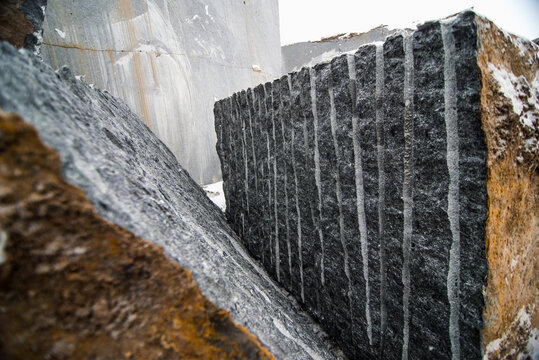Discovering Granite Quarries in South Africa: A Comprehensive Guide
Discovering Granite Quarries in South Africa: A Comprehensive Guide
Blog Article
Introducing the Mysteries of Granite Quarrying: Where Toughness and Elegance Meet
The world of granite quarrying is a world where the raw strength of nature assembles with human artistry to develop frameworks that stand the examination of time with an air of beauty. From the midsts of quarries to the careful sprucing up in workshops, the procedure of changing granite into building marvels is an intricate dancing of practice and innovation. As we peer right into the depths of this old craft, we start to uncover the concealed complexities that shape the very significance of our constructed environment.
The Beginnings of Granite Quarrying
In the annals of building history, the beginnings of granite quarrying are shrouded in a tapestry of ancient craftsmanship and geological wonders. Dating back to ancient Egypt and Mesopotamia, the removal of granite from quarries noted the start of a journey that would at some point lead to the development of a few of the world's most famous frameworks.
Granite quarrying's origins can be mapped to the experienced artisans that recognized the rock's longevity and visual charm. Through a mix of primitive tools and large determination, these early quarry employees discovered granite blocks that would become the building blocks of people.
As people developed, so did the techniques of quarrying granite. The Romans, renowned for their design prowess, developed sophisticated techniques for drawing out granite to build monoliths, temples, and roads that stood the examination of time.
The heritage of these ancient quarrying methods remains to form modern-day style, with granite remaining a symbol of strength and style in construction projects around the globe. (granite quarries in south africa)
Tools of the Quarrying Trade
The development of granite quarrying techniques from ancient people to modern-day times highlights the important role played by the tools of the quarrying profession in shaping the industry's techniques. In old times, quarrying tools were fundamental, often including knives, hammers, and wedges made from products like bronze or iron. These tools called for considerable manpower and time to essence granite blocks from quarries.

Furthermore, the intro of pneumatically-driven tools and high-powered equipment has dramatically minimized the physical labor called for in quarrying operations, enhancing employee safety and security and performance. As the quarrying sector remains to introduce, the devices of the trade remain at the leading edge of driving progress and shaping the future of granite removal.
Removing Blocks of Granite
Making use of precision equipment and advanced techniques, the extraction of granite blocks from quarries has actually ended up being an innovative process in the modern quarrying industry. The preliminary step entails identifying the location and dimension of the granite deposit to figure out the most effective extraction method. When a suitable site is picked, the extraction process begins with the exploration of openings for the placement informative post of explosives. Controlled blowing up methods are after that utilized to disintegrate the granite into manageable sections.

Sprucing Up and Completing Techniques
To attain a flawless surface area on granite blocks, proficient craftsmens employ a series of careful sprucing up and finishing techniques. After the preliminary extraction and forming processes, the granite blocks undertake an extensive sprucing up stage to enhance their natural charm and durability. One common technique made use of in brightening granite is diamond abrasion, where industrial diamonds are used to grind and polish the stone to a smooth coating. This process not just develops a glossy surface however also ensures harmony in color and appearance across the granite block.
Along with polishing, finishing techniques are put on additional fine-tune the granite's look. These techniques may consist of flaming, honing, or cleaning, each offering unique appearances and surfaces to match various visual preferences. Flaming, for example, includes subjecting the granite surface area to high temperature levels to create a harsh, textured coating, suitable for outside applications where slip-resistance is vital. Sharpening, on the various other hand, provides a matte surface that is smooth to the touch, perfect for indoor counter tops and flooring. By carefully selecting and applying these brightening and ending up techniques, craftsmens can change raw granite obstructs right into elegant pieces that display both stamina and style.

Environmental Influence and Sustainability
With the expanding focus on environmental consciousness in the sector, granite quarrying techniques are progressively scrutinized for their impact on natural resources and long-term sustainability. In addition, the transport of granite from quarries to processing facilities produces carbon discharges, additionally contributing to ecological destruction.
To minimize these effects and make sure sustainability in granite quarrying, sector stakeholders are adopting various procedures. Applying advanced technologies to minimize energy consumption and water use, recovering quarried land for eco-friendly restoration, and advertising liable sourcing techniques are some approaches sites being utilized. Qualifications such as the Forest Stewardship Council (FSC) and the Leadership in Power and Environmental Design (LEED) help consumers determine eco friendly granite items.
Conclusion
To conclude, granite quarrying is a process that calls for specialized tools and techniques to extract blocks of granite and brighten them to a high level of surface. While the ecological impact of quarrying can be significant, initiatives are being made to improve sustainability techniques in the sector. On the whole, granite quarrying is a fragile balance between harnessing the toughness and style of this natural stone while reducing its effect on the setting.
Report this page